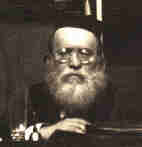 |
Hadrash Ve-Haiyunby the Reisha Rav, HaGoan Rav Aaron Levine TZ"LElucidated and Adapted by Efraim Levine |
 |
Hadrash Ve-Haiyunby the Reisha Rav, HaGoan Rav Aaron Levine TZ"LElucidated and Adapted by Efraim Levine |
Beha'aloscha
Dedicated
in Honor of
Nosson Levine and Tzippy Herzka
Upon Their Engagement
To Dedicate Please Contact Hadrash Ve-Haiyun
And this is the workmanship of the Menorah beaten out gold to its base, to its flower, it is beaten out; according to the image that Hashem showed Moshe. (Bamidbar 8:4)
The Torah here informs us that the Menorah shall be fashioned from one piece of metal shaped by being beaten with a hammer. It is noteworthy that there are a total of three utensils that have this requirement. One, the aforementioned menorah. Two, the two silver trumpets of Moshe mentioned later in this parsha (10:2) and three the kruvim (Shemos 25:18).
The symbolic message of a utensil being fashioned from one mass of material is extraordinary strength. When a utensil is fashioned from many parts it contains an inherent weakness. Because its source was one of separate parts, it will always run the risk of breaking and returning to its original state of separate parts. However, when a utensil is fashioned from one mass, it contains the strength of one unit that does not run the risk of breaking into many parts.
Each utensil found in the Torah is symbolic of an ideal. By requiring specific utensils to be fashioned from one mass, the Torah is conveying that there are specific ideals that require extra strength. The three that have such requirements are the ideals symbolized by the menorah, trumpets and kruvim.
The menorah is symbolic of the study of the oral Torah. In order to master the teachings of the oral Torah extraordinary strength is required. Indeed, the Gemara states a person will not acquire true understanding of Torah unless he gives up his life over it. This is interpreted to mean that one must fully apply himself to its study.
The second ideal that requires strength is that which is symbolized by the silver trumpets. The trumpets are symbolic of Jewish leadership. Only, the Jewish leaders may use the trumpets. They were used for various functions like assembling the congregation, assembling the princes and informing the congregation that it was time to travel further. The message is that Jewish leadership requires extraordinary strength. A leader is always in danger of misguiding his constituents in the wrong direction. He is in danger of being swayed and persuaded by the unscrupulous of the congregation. To overcome these difficulties, he must gird himself with super-human strength.
The third ideal that requires extraordinary strength is symbolized by the kruvim. The Gemara notes that the word kruv is closely related to the word kravia, which is translated as child. Indeed, according to one opinion the kruv had the appearance of a child. The commentators thus note that the kruvim that rested on top of the luchos symbolize Jewish education. The message here again is that Jewish education requires extraordinary strength. The children are the future of the Jewish people. Everything and anything must be done to guarantee a perfect and uncompromised environment of opportunity for the children.
To summarize, there are three things that require extraordinary strength: The study of Torah, leadership and education.
Going one step further, we may suggest that because only these three utensils have the unique requirement of being fashioned from one mass of material, the Torah is indirectly teaching us that these three are strongly interrelated. If we start with the menorah the message is that true study of the oral Torah, symbolized by the menorah can only be when it is transmitted from the leaders, i.e., the trumpets, to the children, i.e., kruvim. Likewise, when starting with the trumpets, the symbol of the Jewish leaders, the conveyed message is that the primary role of a Jewish leader is to guarantee that the children receive a proper education of the oral Torah. Finally, when looking from the vantage point of the kruvim the message is that Jewish education must includes the doctrine of respect and reverence for the oral teachings of its leaders and elders.